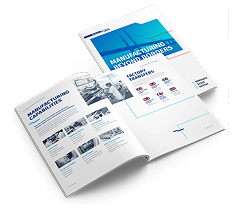OEMs outsource their manufacturing process to control costs and accelerate delivery of their products. But by the time designs are transferred to a chosen manufacturer, many opportunities for optimisation and cost savings have been lost.
A smarter path is to partner early with an EMS provider that offers robust DfX (Design for Excellence) capabilities - a team who understands not just how to build your product, but how to design to build.
Those partners can deliver insights that preserve margins, accelerate NPI (new product introduction), and reduce the risk of product failures.
9 cost traps lurking in your D&D process
1. Early design decisions lock in cost and risk
Research shows that 80 % of a product’s lifetime cost is determined during its design process. Even before prototyping is complete, architecture, layout, and part selection may become fixed.
And once those choices are baked in, downstream flexibility shrinks.
Harald Schroeder’s article on ‘total manufacturing costs’ breaks down the way missed design-stage optimisation can unnecessarily inflate the costs of future production.
An experienced EMS partner with DfX expertise can help you shape those critical early design decisions - challenging over-complexity, preventing unnecessary features, and steering you away from component or assembly risk.
2. Late changes become more costly to implement
Industry analysis shows that late design changes can force retooling, fresh validation requirements, firmware rewrites, or supply-chain adjustments. Those changes can cascade into schedule delays, cost overruns, and risk to market window.
The stark reality is that the cost to change a product increases with every step towards launch.
.webp?width=1200&height=600&name=Resistance-Cost-Potential-of-Change%20(1).webp)
Early EMS review of your designs helps identify potential flaws while fixes are still manageable, before ripples escalate.
3. Prototyping can ignore costly production realities
The prototyping process is vital to any design and development process. Early stage models give you proof of concept, while subsequent iterations refine usability.
But hand-built prototypes often ignore the constraints of volume manufacturing, such as tolerances, variability, accessibility, throughput, and test access. If designs and prototypes are finalised without scrutiny by the manufacturer, you risk untested assumptions making it through to production.
EMS partners familiar with scale manufacturing can validate prototypes against real assembly constraints and surface issues before production begins.

Read our case study to see how ESCATEC applied DfX principles to help a US pharma pioneer turn a bulky prototype into a compact, production-ready inhaler with precision heating and scalable manufacturability.
ESCATEC didn’t just solve our technical challenges - they helped us rethink the entire device architecture, making it easier to use and manufacture."
Head of R&D, Silicon Valley Pharma Company
4. Tooling is a high-stakes commitment
Once moulds, fixtures, or jigs are cut, there is little margin for error. A misjudged tolerance or overlooked interference can force full retooling - wasting time, budget, and momentum.
An EMS partner engaged early on can review tooling readiness, ensuring geometry, draft, assembly paths, and tolerances align with production capabilities.
5. Your BOM needs stress testing
Engineers often select components without visibility into supply-chain realities. But shortages, obsolescence, and lead-time variance can force last-minute redesign, cost spikes, or missed launches.
An EMS provider with all their procurement insight can validate the BOM during design. They can flag risky or single-source parts, suggest alternates, and ensure the plan is supply-resilient.
6. Testability is not part of the design plan
If a board lacks test points, diagnostics, or hooks for in-circuit or functional tests, yield and field defect rates suffer. Retrofitting test structures is costly or even impossible.
An EMS partner skilled in test engineering helps embed test strategy early, offering coverage, diagnostics, and access that align with production and compliance.
7. There’s an over-reliance on quality control
As the great industrialist Harold S. Dodge said many years ago, ‘You cannot inspect quality into a product’.
Inspection only identifies defects, great design prevents them from occurring in the first place.
Quality problems often stem from poor specifications, including tolerancing slip-ups, material choices, thermal margins, mechanical stress, or process margins.
A DfX‑capable EMS partner helps enforce ‘quality by design’ guardrails that protect future products from compliance shocks.
8. When scaling requires redesign
Designs that succeed at 1,000 units may fail at 100,000. Manufacturing throughput, assembly balance, supply stability, yield variance, and automation become critical.
An EMS partner with volume experience helps ensure the design can scale, supporting transitions through ramp, automation, yield tuning, and capacity margins.
9. Regulatory and compliance risk are not controlled by design
In regulated sectors (medical, industrial safety, aerospace), design decisions affect traceability, documentation, risk mitigation, materials, and testing. If compliance is considered too late in the process, redesign or revalidation may become unavoidable.
An EMS partner versed in relevant standards (ISO 13485, FDA, CE, UL, etc.) can flag regulatory risks early and align the design with certification demands.
Conclusion
OEMs that separate design from manufacturing on a time schedule risk imposing downstream chaos. The wiser route is to engage EMS partners who think in DfX from day zero - embedding manufacturability, testability, quality, scaling, and compliance into every decision.
That approach reduces late rework, preserves margin, accelerates NPI, and supports sustainable product journeys. When evaluating partners, prioritise those who present structured DfX services - not just manufacturing capability.
Your next product’s success may well depend on that decision.

